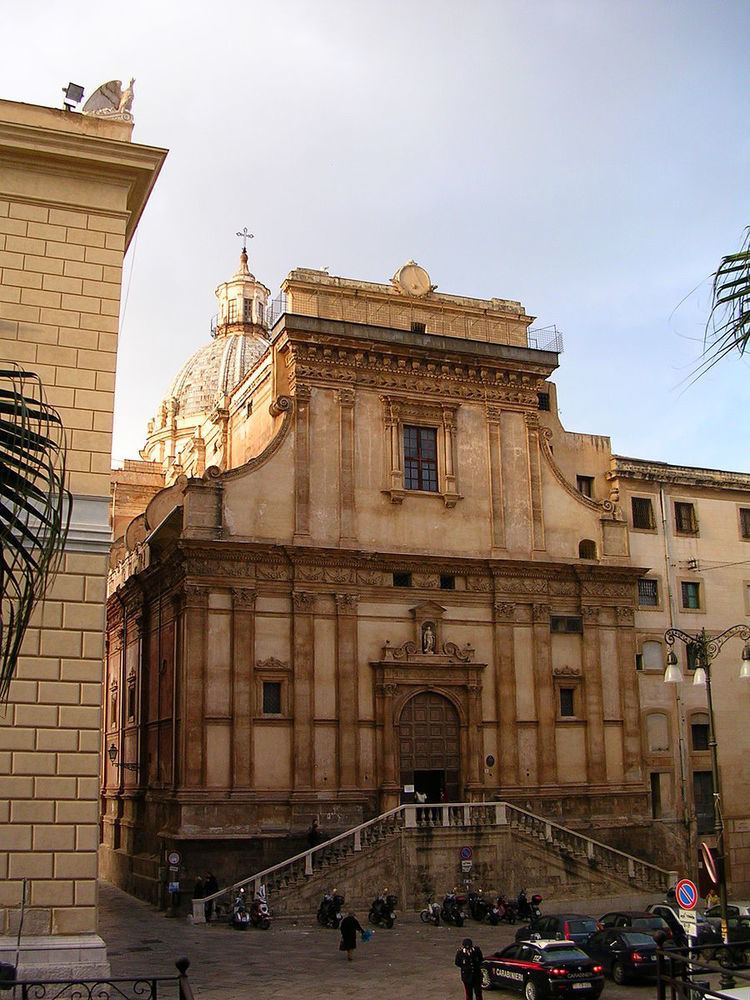Opened 1596 Groundbreaking 1566 | Affiliation Roman Catholic Completed 1596 | |
 | ||
Address Piazza Bellini, 90133 Palermo, Italy Similar San Cataldo - Palermo, San Giuseppe dei Teatini, Martorana, Piazza Pretoria, Fontana Pretoria | ||
The Church of Saint Catherine (Italian: Chiesa di Santa Caterina or simply Santa Caterina) is an important church of Palermo. It is located in the heart of the historic centre, between Piazza Bellini and Piazza Pretoria, in the same area of other well-known architectural landmarks like the churches of Martorana and San Cataldo (both of them are World Heritage Sites), the Fontana Pretoria and the Palazzo Pretorio, headquarters of the Palermo municipality. The church is a synthesis of Sicilian Baroque, Rococo and Renaissance styles.
Contents
History
In 1310 the last will of the rich Benvenuta Mastrangelo determined the foundation of a female monastery under the direction of the Dominican Order. The new monastery was dedicated to Saint Catherine of Alexandria and was erected in the area where the old palace of George of Antioch, admiral of Roger II of Sicily, stood.
In 1532 the widening of the building was decided. Between 1566 and 1596 the church was rebuilt under the supervision of the Mother Prioress Maria del Carretto. For a long time the architectural project was attributed to Giorgio di Faccio, architect of another church of Palermo, San Giorgio dei Genovesi. However, more recent studies show the involvement of architects like the Florentine Francesco Camilliani and the Lombard Antonio Muttone, already engaged in the project of Piazza Pretoria. The dome was designed by Francesco Ferrigno. The church was inaugurated on 24 November 1596. Many years later, on 16 March 1664, the church was consecreted by the archbishop of Palermo Pietro Martinez y Rubio in the presence of the Viceroy of Sicily Francesco Caetani, 8th Duke of Sermoneta.
During the 19th century the church was damaged on several occasions: during the uprising of 1820-1821, the Sicilian revolution of 1848, the Gancia revolt, the insurrection of Palermo (1860) and the Sette e mezzo revolt (1866).
Paintings
Oil on canvas:
Frescoes:
The church houses other precious artworks (statues, altars and frescoes) designed or made by artists like Giacomo Amato, Giovanni Battista Ragusa, Andrea Palma, Antonello Gagini, Francesco Sozzi, Alessandro D'Anna and Ignazio Marabitti.
